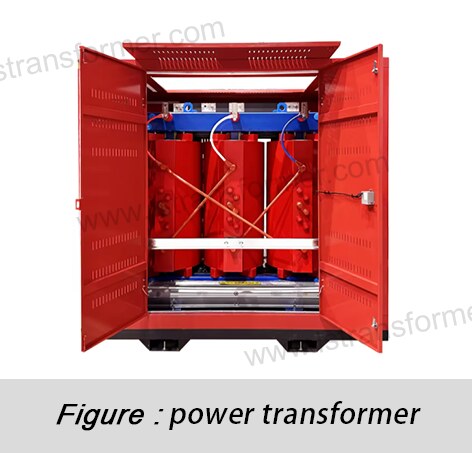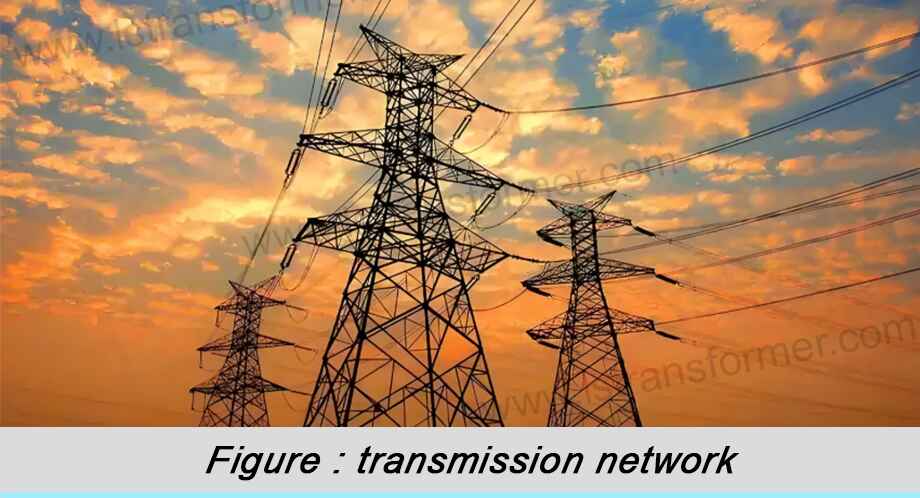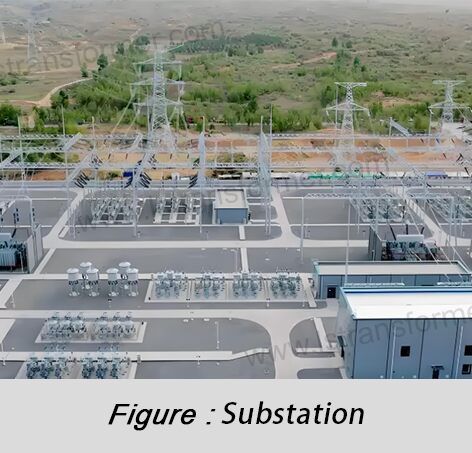How Do Power Transformers Work? —A Full Process Analysis from Power Generation to Consumption
—A Full Process Analysis from Power Generation to Consumption
Power transformers are the core equipment of grid systems, performing the critical tasks of voltage conversion and energy transmission. Approximately 40% of global energy loss occurs during power transmission and distribution, while high-efficiency transformers can reduce energy waste by 15%-25% (Source: IEC 60076-20). Based on international standards such as IEEE C57.12 and EN 50588, this article analyzes the role of transformers in different stages of the power grid, supported by cross-border engineering case studies.
Content
1. Power Plants: The Starting Point of Energy Conversion with Step-Up Transformers
The output voltage of generators typically ranges from 10-25kV. Direct transmission would result in excessively high line currents (Joule loss), leading to significant energy waste. Step-up transformers increase the voltage to 110-765kV, reducing the current to 1/10 of its original value and cutting transmission losses to 1/100. For example, a German North Sea wind farm boosted voltage from 33kV to 380kV, reducing line losses for 300MW of power from 5% to 0.3%.
Key Design Features:
(1) Core Material: Grain-oriented silicon steel, offering high magnetic permeability and low loss.
(2) Winding Structure: Transposed conductors (IEC 60076-5 certified) to minimize eddy current losses.
(3) Cooling System: Forced oil circulation (OFAF) ensures a temperature rise ≤65K under full load (IEEE C57.12.00 standard).
Workflow:
(1) The generator outputs AC power (e.g., 50Hz/22kV) to the transformer’s primary side.
(2) Magnetic induction generates high voltage (e.g., 400kV) on the secondary side.
(3) The high-voltage power is connected to transmission lines via circuit breakers for long-distance transmission.
2. Transmission Networks: High-Voltage Lines as Energy Transport Channels
Transmission networks operate at 400kV-765kV to reduce line losses and enable cross-border power exchange. Autotransformers are widely used here, as their shared-winding design cuts material costs by 30%.
Key Design Features:
(1) Insulation Design: Lightning impulse withstand voltage ≥1425kV (IEC 60071-1).
(2) Voltage Regulation: On-load tap changers (OLTC) enable ±10% voltage adjustment (IEC 60214).
Case Comparison:
Parameter | Two-Winding Transformer | Autotransformer |
Capacity | 500MVA | 500MVA |
Total Losses | 650kW | 580kW |
Cost | $2.2 million | $1.5 million |
3. Substations: Voltage Regulation Hubs with Multi-Stage Step-Down
Substations reduce transmission voltage (e.g., 220kV) to distribution levels (10kV) in stages. Parallel capacitor banks compensate for reactive power, improving the power factor from 0.8 to 0.95 and reducing line losses by 23%.
Key Design Features:
(1) Efficiency Standards: EU oil-immersed transformers must meet IE4 efficiency (no-load loss ≤0.25kW @100kVA).
(2) Dynamic Voltage Regulation: On-load tap changers adjust voltage in 1.25% increments with ≤5-second response time (EN 50588-1).
Workflow:
(1) The high-voltage side receives 220kV power.
(2) Multi-winding transformers step down the voltage to 10kV in stages.
(3) Capacitor banks dynamically switch to maintain voltage fluctuations within ±5%.
4. End Users: Customized Voltage Adaptation for Diverse Scenarios
● Industrial Applications
Industrial transformers are customized for specific voltage and current requirements. Rectifier transformers use phase-shifting windings (e.g., ±7.5°) to reduce harmonic content from 12% to 4.5% (IEEE 519), with secondary-side DC ripple ≤2% (IEC 61378-1). Copper foil conductors suppress skin effects. For metallurgical furnaces, arc furnace transformers deliver ultra-low voltage (50-200V) and high current (50kA), with short-circuit impedance ≤0.5mΩ to prevent arc instability. Water-cooling systems (EN 50588-1) and high-saturation silicon steel ensure stability.
● Residential Power Supply
Pole-mounted transformers step down 10kV distribution voltage to 400V (three-phase four-wire system). Amorphous alloy cores reduce no-load losses by 70% compared to silicon steel, while stepped-lap joints keep noise ≤55dB(A) (ISO 3744). For example, a Tokyo commercial district achieved annual savings of 180,000 kWh, cutting the payback period to 3.2 years.
5. Comprehensive Transformer Parameter Comparison Across the Grid
Stage | Transformer Type | Key Parameters | Design Highlights | Standards |
Power Plant | Step-up Transformer | Capacity: 300MVA, Efficiency ≥99.5% | Grain-oriented steel + transposed conductors, OFAF cooling | IEC 60076-3 |
Transmission | Autotransformer | Voltage Ratio: 400kV/220kV, Loss ≤580kW | Shared-winding design, 1425kV lightning withstand | IEC 60071-1 |
Substation | Step-Down Transformer | Voltage Range: ±10%, Response ≤5 seconds | On-load tap changer + dynamic reactive compensation | EN 50588-1 |
Industrial User | Rectifier/Furnace Transformer | Harmonics ≤4.5%, Current 50kA | Phase-shifting windings + water cooling | IEC 61378-1, EN 50588-1 |
Residential | Pole-Mounted Transformer | Noise ≤55dB(A), Efficiency ≥98.7% | Amorphous core + stepped-lap joints | ISO 3744 |
In Summary
From voltage boosting at power plants to end-user adaptation, power transformers enable efficient global grid operations through precise voltage conversion. For IEC/IEEE/EN-compliant customized solutions, contact our international technical team for full-cycle services from design to maintenance.
Technical Compliance Notes:
(1)References IEC 60076-3 Section 7.2 "Power Plant(2)Transformer Testing Methods"
(3)Links to IEEE C57.12.00 standard documentation
(4)Image ALT tag: "power-transformer-in-grid"
(5)Internal anchor text: "transformer-efficiency-at-optimal-load" linking to related articles
Contact Us
LuShan, est.1975, is a Chinese professional manufacturer specializing in power transformers and reactors for50+ years. Leading products are single-phase transformer, three-phase isolation transformers,electrical transformer,distribution transformer, step down and step up transformer, low voltage transformer, high voltage transformer, control transformer, toroidal transformer, R-core transformer;DC inductors, AC reactors, filtering reactor, line and load reactor, chokes, filtering reactor, and intermediate,high-frequency products.
Our power transformers and reactors are widely used in 10 application areas: rapid transit, construction machinery, renewable energy, intelligent manufacturing, medical equipment, coal mine explosion prevention , excitation system, vacuum sintering(furnace), central air conditioning.
Know more about power transformer and reactor :www.lstransformer.com.
If you would like to obtain customized solutions for transformers or reactors, please contact us.
WhatsApp:+86 17267488565
Email:marketing@hnlsdz.com

 EN
EN
 FR
FR DE
DE ES
ES



